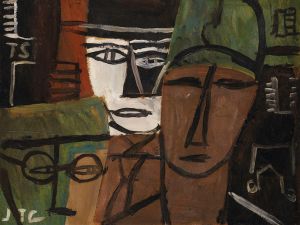
La tour aux rideaux
A hand-painted replica of Robert Delaunay’s masterpiece La tour aux rideaux, meticulously crafted by professional artists to capture the true essence of the original. Each piece is created with museum-quality canvas and rare mineral pigments, carefully painted by experienced artists with delicate brushstrokes and rich, layered colors to perfectly recreate the texture of the original artwork. Unlike machine-printed reproductions, this hand-painted version brings the painting to life, infused with the artist’s emotions and skill in every stroke. Whether for personal collection or home decoration, it instantly elevates the artistic atmosphere of any space.
Robert Delaunay was a French artist known for his contributions to the Orphism art movement, which is characterized by the use of strong colors and geometric shapes. One of his notable works is "La tour aux rideaux," a painting that reflects his interest in modernity and the dynamic nature of urban life.
"La tour aux rideaux" is part of Delaunay's series of works that focus on the Eiffel Tower, a symbol of modern engineering and innovation. The painting captures the essence of the tower through a fragmented and colorful depiction, emphasizing movement and light. Delaunay's approach to the subject matter is not to represent the Eiffel Tower in a realistic manner but to convey the sensation and experience of viewing it. This aligns with the principles of Orphism, which sought to evoke emotions and sensations through abstract forms and vibrant colors.
Delaunay's fascination with the Eiffel Tower began around 1909, and he continued to explore this motif in various works throughout his career. The tower, for Delaunay, was more than just an architectural marvel; it was a symbol of the new technological age and the changing landscape of Paris. In "La tour aux rideaux," Delaunay uses a kaleidoscope of colors and overlapping planes to create a sense of depth and movement, capturing the viewer's attention and inviting them to experience the vibrancy of the city.
The painting reflects Delaunay's interest in simultaneity, a concept that involves the depiction of multiple perspectives and moments in time within a single composition. This technique allows the viewer to perceive the subject from different angles and moments, creating a dynamic and immersive experience. The use of bright, contrasting colors further enhances this effect, as Delaunay believed that color could be used to convey rhythm and harmony, much like music.
Delaunay's work, including "La tour aux rideaux," had a significant impact on the development of abstract art in the early 20th century. His innovative use of color and form influenced other artists and movements, including the German Expressionists and the Russian avant-garde. Delaunay's exploration of modernity and his unique approach to abstraction contributed to the broader dialogue about the role of art in a rapidly changing world.
"La tour aux rideaux" exemplifies Delaunay's ability to transform a familiar subject into an abstract composition that challenges the viewer's perception. By focusing on the interplay of color and form, Delaunay invites the viewer to engage with the painting on an emotional and sensory level, rather than simply as a representation of reality. This approach reflects the broader goals of the Orphism movement, which sought to create art that was both visually stimulating and intellectually engaging.
In summary, "La tour aux rideaux" by Robert Delaunay is a significant work that captures the spirit of modernity through its abstract depiction of the Eiffel Tower. The painting's vibrant colors and dynamic composition reflect Delaunay's innovative approach to art and his contribution to the development of abstract art in the 20th century. Through this work, Delaunay invites viewers to experience the energy and excitement of the modern world, as seen through the lens of one of its most iconic symbols.





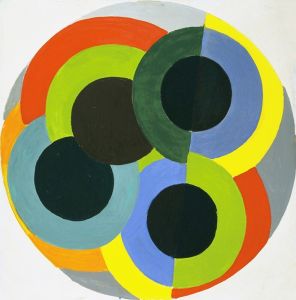
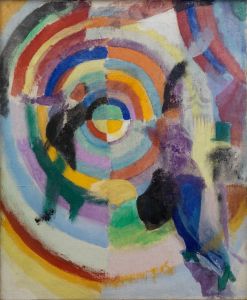
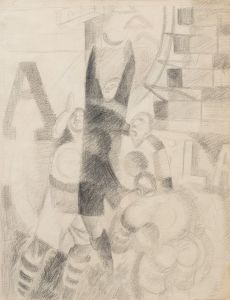
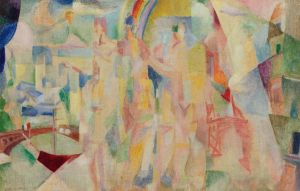
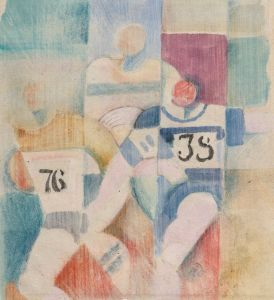
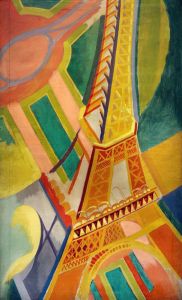

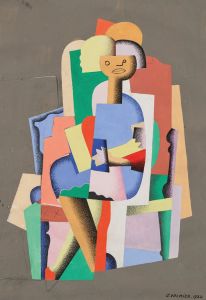
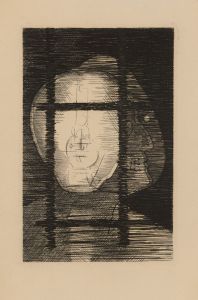
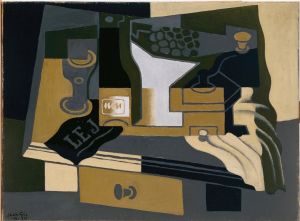
![Graphic design of nude female.] [Cubist composition drawing](/imgs/249427/s/winold-reiss-graphic-design-of-nude-female-cubist-composition-drawing-b6f17b02.jpg)

